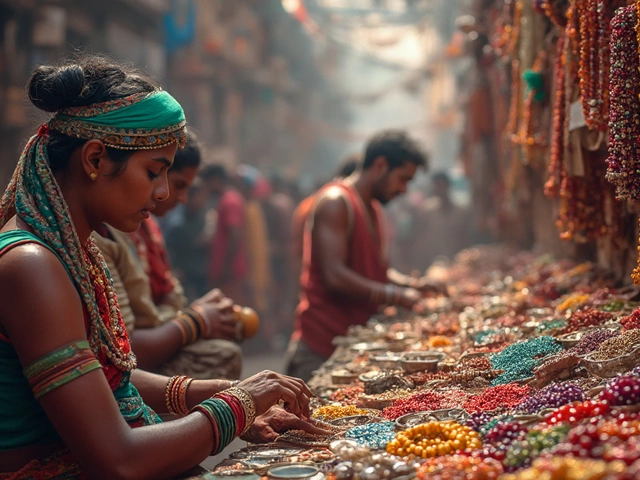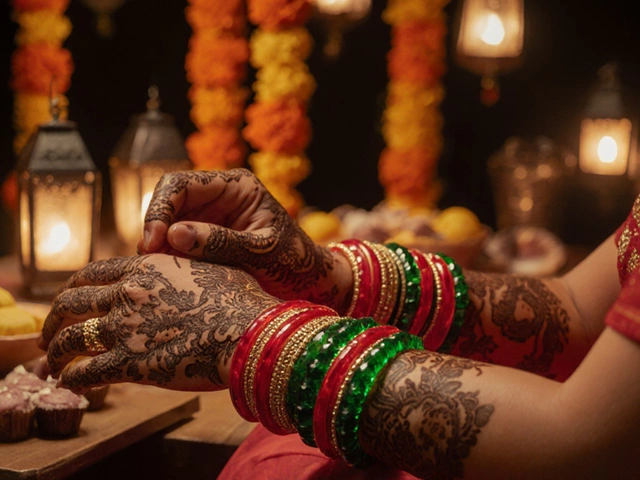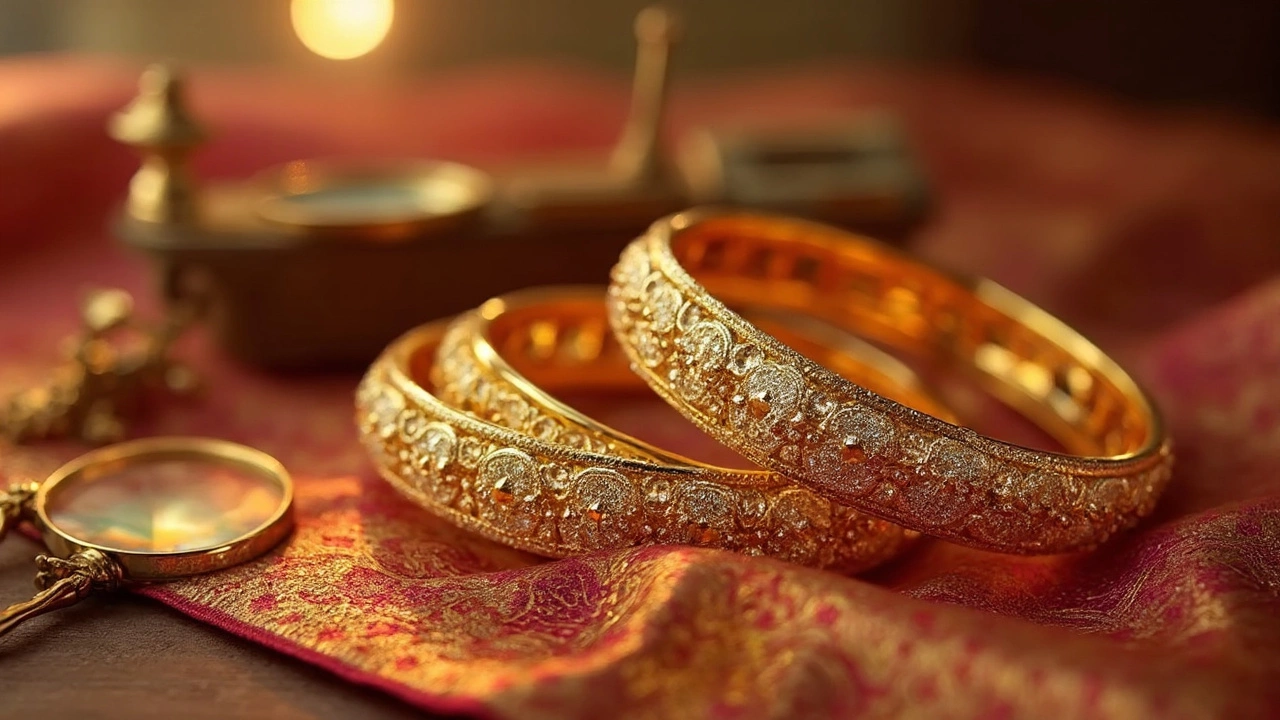
Picture this: you walk into a jewelry store, and three rings catch your eye—one yellow, one white, one rose. Each looks stunning. But yeah, only one can be the most expensive. If you're guessing, trust me, there's more to this than just picking your favorite color.
People tend to think yellow gold is always the priciest because it looks most "classic." Trouble is, price tags don’t always care about tradition. What actually matters is what gets mixed in with the gold to make those colors, how pure the gold is, and market prices for those mixed-in metals. So before you splurge, let’s make your wallet happy and bust a few myths about which color gold truly costs more.
- Why Does Gold Come in Different Colors?
- What Affects the Price of Each Gold Color?
- Is Yellow, White, or Rose Gold the Most Expensive?
- Tips for Choosing the Right Gold Color
- What Smart Shoppers Should Know
Why Does Gold Come in Different Colors?
So, why isn’t all gold jewelry that classic bright yellow you see in old movies? The answer’s pretty simple: gold color changes based on what metals get mixed in. Pure gold is almost too soft for daily wear, so jewelers blend it with metals to toughen it up—and that’s what changes the color.
Here’s the breakdown:
- Yellow gold stays closest to the natural color. It’s usually mixed with silver and copper, keeping that sunrise gold vibe everyone imagines when they hear “gold.”
- White gold comes from blending gold with white metals like palladium, nickel, or sometimes zinc. This gives it a silvery shine that looks a lot like platinum, but it’s usually more affordable.
- Rose gold gets its blushy look from extra copper in the mix. The more copper, the pinker the gold. People love it for that romantic, vintage style.
The color isn’t just about looks—it can affect things like how durable the ring is or how easy it is to resize. Not all gold jewelry is created equal, and that’s because not all color blends use the same recipe.
Here’s a peek at what you might find in different styles:
| Gold Color | Gold (%) | Main Alloys |
|---|---|---|
| Yellow | 75% (18k) | Silver, Copper |
| White | 75% (18k) | Palladium, Nickel |
| Rose | 75% (18k) | Copper, Silver |
If you see “karat” or “k,” that number tells you how much pure gold is inside. Higher k means more real gold, but it also means the jewelry might scratch easier because pure gold is so soft.
What Affects the Price of Each Gold Color?
You might think all gold jewelry has the same value, but that's just not true. The price for gold color jewelry doesn’t just depend on how it looks. There are some real factors at play here, and knowing these will save you from sticker shock—or paying way too much for something that just looks shiny.
The biggest thing? Purity. When you see “24k,” you’re looking at pure gold, which is soft and usually yellow. Jewelry is almost never totally pure, though. Most rings or necklaces you’ll find are 18k, 14k, or even 10k, meaning they’re mixed with other metals. The more gold content, the more expensive, plain and simple.
But here’s the twist: Each gold color needs different metals for that trademark shade. For white gold, jewelers blend in stuff like palladium, nickel, or silver to “bleach” the yellow out. Sometimes, those extras are pricier than gold itself—take palladium, which usually bumps up the price of white gold.
- Yellow Gold: Mixed with silver and copper. Ingredients are standard and not too costly.
- White Gold: Mixed with palladium or nickel. Palladium costs can skyrocket, making some white gold jewelry unexpectedly expensive.
- Rose Gold: Mixed mainly with copper, which is usually pretty cheap compared to the others.
It also matters what karat you choose. For example, an 18k white gold ring can sometimes be pricier than an 18k yellow gold ring if it’s made with more expensive metals. Throw in extra coatings—like rhodium plating on white gold to keep it shiny—and your price climbs again.
| Gold Color | Main Alloy | Usual Cost Impact |
|---|---|---|
| Yellow Gold | Silver & Copper | Lowest change to gold value |
| White Gold | Palladium/Nickel | Can increase price, especially with palladium |
| Rose Gold | Copper | Usually cheapest |
Bottom line: If you’re hunting for the most expensive gold jewelry color, watch the mix of other metals, not just the color. The designer, brand, and finishing touches can all send prices north too, but it all starts with what’s inside the metal itself.
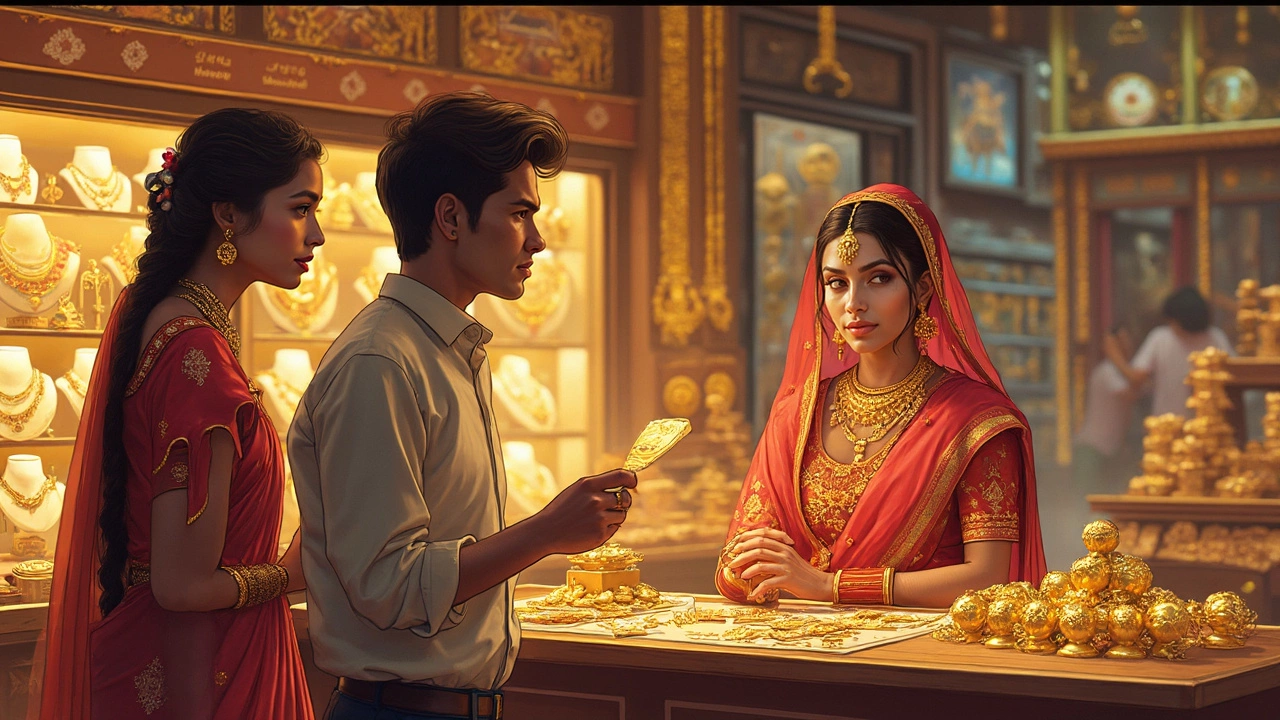
Is Yellow, White, or Rose Gold the Most Expensive?
Alright, here’s the straight talk: the actual color—yellow, white, or rose—doesn’t decide the price of gold jewelry all by itself. What really flips the price tag is the blend of metals used, the current prices of those metals, and how much pure gold is present in the piece.
You might walk in thinking yellow gold has to be worth more just because it looks the most “gold,” but that’s not always how it works. The key thing is gold’s purity, measured in karats (like 18k or 14k). More pure gold (higher karat) means a higher price—no matter the color.
Here’s how each type stacks up, price-wise, in most stores:
- Yellow gold: Usually costs about the same as white or rose gold for the same karat, since it needs less extra metal to make the color. But it can creep up in price when gold prices spike.
- White gold: Is often a bit pricier than yellow because it gets mixed with costlier metals like palladium or nickel, and there’s usually a rhodium plating “finish” to make it bright and shiny. That coating needs to be replaced over time, adding a hidden cost.
- Rose gold: Is usually similar in price to yellow gold, since its pink color comes from copper (which is much cheaper than the metals in white gold). It’s had some trendy moments recently, but the material cost stays about even.
Here's a simple table showing how things usually compare for a standard 18k ring (prices will bounce around with raw metal prices):
| Gold Color | Main Alloys Added | Usual Cost Range |
|---|---|---|
| Yellow Gold | Silver, copper | $$ - $$$ |
| White Gold | Palladium, nickel, rhodium plating | $$$ (often slightly higher) |
| Rose Gold | Copper | $$ - $$$ (about the same as yellow) |
If you just want the purest gold, grab yellow 24k—just know it’s soft and not practical for daily wear, so 18k and 14k are way more common for all the gold jewelry you see on people.
A good tip? If you’re after value and want your ring to last, don’t obsess over color. Shop by karat and check what extra metals are in each color, because that’s where the real cost lives.
Tips for Choosing the Right Gold Color
Picking the best gold color for your jewelry isn’t just about personal taste—you want something that fits your lifestyle, skin tone, and even your daily habits. Each shade, whether yellow, white, or rose, comes with its own perks and drawbacks. Let’s sort through the facts so you can make a choice that actually works for you (and your wallet).
- Yellow gold is the purest in appearance. If you're worried about sensitive skin, real yellow gold (think 18k or higher) is less likely to bother you. Plus, you barely have to polish it. But it’s softer, so it scratches more easily. This can matter for rings or bracelets you wear a lot.
- White gold gets its color from being mixed with metals like nickel or palladium. Most shops coat it in rhodium for extra shine. It looks a lot like platinum but costs less, which is great if you love that silvery vibe. Thing is, the rhodium wears off. Every couple years, you’ll need to re-coat it (called re-plating) if you want to keep the bright look.
- Rose gold stands out for its unique, warm hue, thanks to its copper mix. It's pretty sturdy, so it holds up to daily use. Just know that copper can cause irritation if you have sensitive skin. It also gets a bit darker over time—which some people actually like.
If you have lighter or cooler-toned skin, white gold usually pops more. Medium or olive skin tones look good with almost any gold jewelry color. If you’re tan or have deeper skin, yellow and rose gold can look amazing.
Are you tough on your jewelry? Go with a lower-karat yellow gold, white gold, or rose gold blend—they’re harder because they have more alloys mixed in. If you want your ring or necklace to look more expensive, pick a style that uses less metal but higher purity, like a dainty 18k band.
Money matters? Here’s a rough idea of where your dollar goes:
| Gold Color | Common Alloy Metals | Typical Price Factor |
|---|---|---|
| Yellow Gold | Silver, Copper | Mid to High (Depends on purity) |
| White Gold | Nickel, Palladium | Similar to Yellow, sometimes higher if palladium is used |
| Rose Gold | Copper | Usually a bit less than yellow or white |
One last thing: check how each piece is made. Thin coatings and chunky alloys can change how your jewelry looks after a couple years. When Miranda and I pick out something new, we always ask for details about the alloys before going by looks alone. The right questions now mean you don’t end up with fading, dull, or itchy jewelry later.
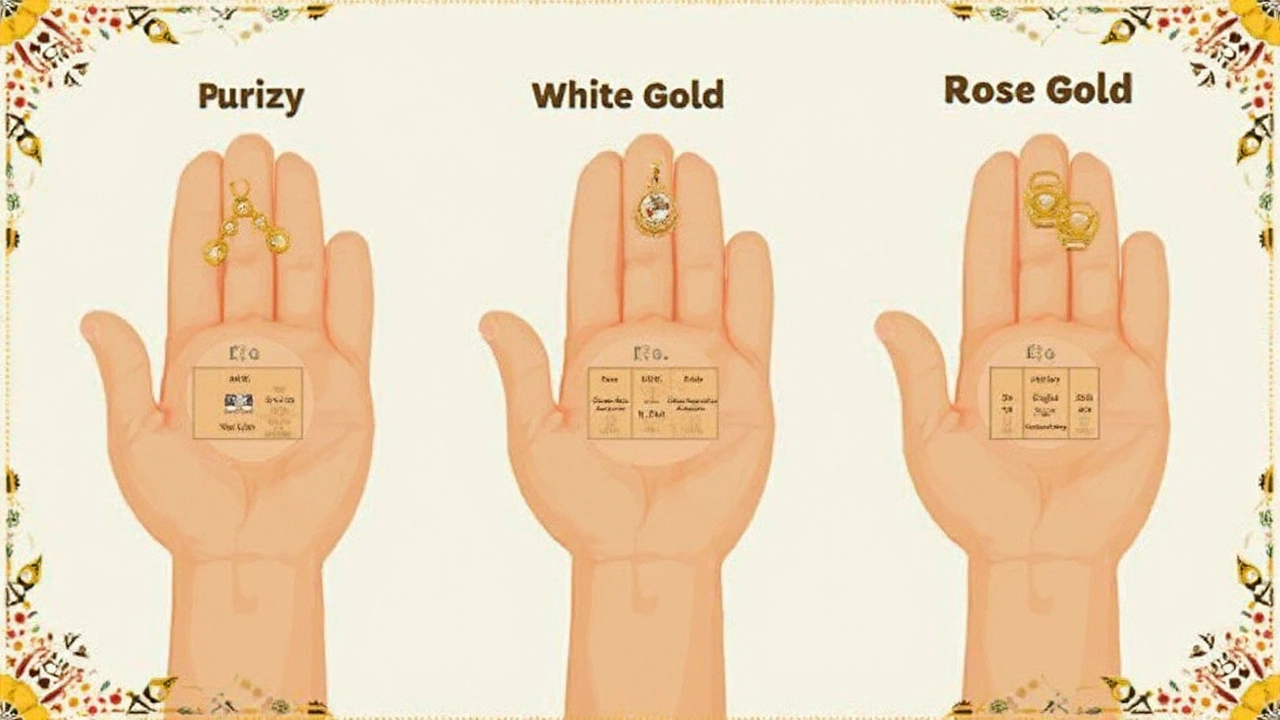
What Smart Shoppers Should Know
If you care about getting the best deal on gold color and value, you need to watch more than the sparkle. Tons of folks get tripped up thinking one color is always pricier, but that’s just not true. The real trick? Understanding what you’re actually buying.
- Gold purity matters: Most jewelry isn’t pure gold. Instead, it’s gold mixed with other metals to boost strength and change color. 24k is pure but super soft and usually not used in everyday gold jewelry. 18k (75% gold), 14k (58.3% gold), and 10k (41.7% gold) are way more common.
- Metal mix drives price: Yellow gold is mixed with silver and copper. White gold uses gold plus nickel, palladium, or platinum. Rose gold? That’s mainly gold and copper. The price depends on current market costs for these metals. For example, if palladium or platinum prices spike, white gold jewelry can actually be the most expensive at the moment.
- Don’t get blinded by the look: A shiny white-gold ring usually has a rhodium coating, which needs touching up every few years. That means extra cost down the line.
| Gold Type | Common Alloy Mix | Extra Costs |
|---|---|---|
| Yellow Gold | Gold, Silver, Copper | None |
| White Gold | Gold, Palladium/Nickel/Platinum | Rhodium re-plating |
| Rose Gold | Gold, Copper | None |
Don’t sleep on durability, either. Rose gold is the toughest of the bunch (copper’s a strong metal), while higher-karat yellow gold scratches easier. White gold can cause allergies because of nickel in some mixes.
If you want your gold jewelry to hold value over time, check the hallmark. It tells you the gold content, which stays valuable no matter what’s trendy. Don’t forget to ask about the actual percentage of gold (the karat number), and get a breakdown of what other metals are in the mix. That way, you won’t just get the color you like, you’ll get something worth its price.



